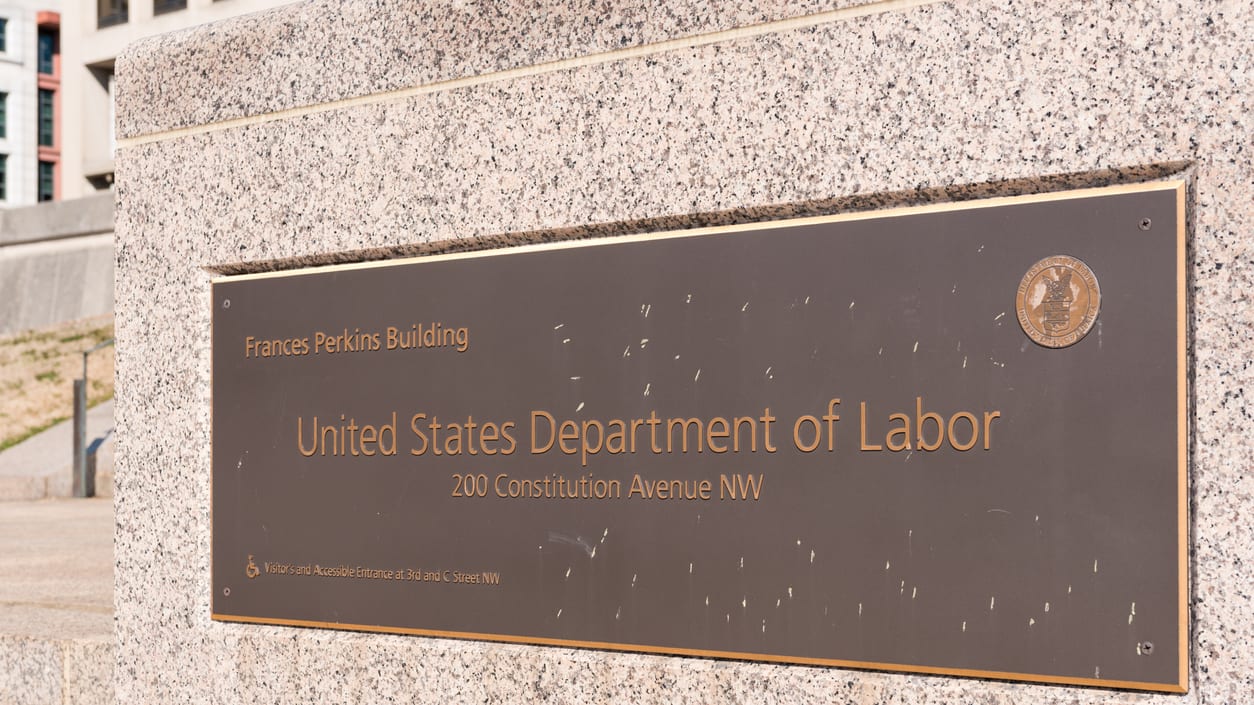The U.S. Department of Labor (DOL) reminded employers that they must remain in compliance with federal labor standards as organizations adopt artificial intelligence or other automated systems in the workplace, changing how work gets done.
The department’s Wage and Hour Division (WHD) issued a bulletin April 29 regarding potential issues that may arise in complying with the Fair Labor Standards Act (FLSA), the Family and Medical Leave Act (FMLA), and other federal labor laws due to the use of AI and automation technologies.
WHD Administrator Jessica Looman outlined how some AI and automated systems perform various functions for employers, such as tracking work hours, measuring employee performance, setting work schedules, assigning tasks, and performing other HR functions.
“When used responsibly, AI has the potential to help improve compliance with the law,” Looman said. “Without proper human supervision, however, these technologies can pose potential risks to workers with respect to labor standards and may result in violations of the laws enforced by WHD.”
She added that the use of AI in the workplace poses the risk of creating systemic violations and that, ultimately, employers must ensure the responsible use of AI.
FLSA and AI
The bulletin addressed AI technologies that intersect with the FLSA, specifically those that track work time, monitor productivity, and calculate wages owed. Some of these tools are used to measure and analyze worker productivity metrics in real time, including those that analyze computer keystrokes and mouse clicks, website browsing, and presence in front of a web camera.
“Reliance on automated timekeeping and monitoring systems without proper human oversight,
however, can create potential compliance challenges with respect to determining hours worked for purposes of federal wage and hour laws,” Looman said. “AI and the use of automated technologies for scheduling, timekeeping, and tracking employee location may undercount hours worked, particularly during possible break times; when employees perform work in multiple locations; or when employees have periods in which they are waiting to be engaged.”
Regardless of the technologies and systems used, employers are responsible for ensuring that they are paying employees for all hours worked under the law, she said.
Employers must comply with minimum wage and overtime pay requirements under the FLSA and other applicable laws regardless of the use of AI or other technologies used to calculate and
determine workers’ wage rates. The WHD stated that employers are adopting technologies that use automated algorithms to independently calculate and determine workers’ rates of pay based on a variety of data and metrics.
“Employers should exercise proper human oversight to ensure that such systems pay employees the applicable minimum wage and accurately calculate and pay an employee’s regular rate and overtime premium,” Looman said.
FMLA and AI
Employers must comply with the FMLA regardless of whether AI or other automated systems are used to track and manage the administration of federally protected leave.
AI and other technologies are sometimes used to process leave requests or track time off, according to the WHD.
“Without responsible human oversight, relying on automated systems to process leave requests—including determining eligibility, calculating available leave entitlements, or evaluating whether leave is for a qualifying reason—can create potential compliance challenges,” Looman said.
Employers should oversee the use of AI or automated technologies to avoid the risk of widespread violations of FMLA rights, including failing to authorize or otherwise interfering with or restraining FMLA leave through an automated management tool.
White House Directive
The bulletin stems from an Oct. 30, 2023, White House executive order calling for a coordinated U.S. government approach to ensuring the responsible and safe development and use of AI.
Based on the same directive, the Office of Federal Contract Compliance Programs (OFCCP) published a guide on the use of AI by federal contractors. The guide explains the applicability of current equal employment opportunity law to the use of AI.
Additionally, the guide contains a section on best practices for federal contractors, including notices about the use of AI, the design and implementation of AI systems, the use of vendor-created AI systems, and accessibility and disability inclusion.
Employers must also take care not to use AI to retaliate against workers in violation of federal labor standards.
Advertisement
An organization run by AI is not a futuristic concept. Such technology is already a part of many workplaces and will continue to shape the labor market and HR. Here's how employers and employees can successfully manage generative AI and other AI-powered systems.
Advertisement



